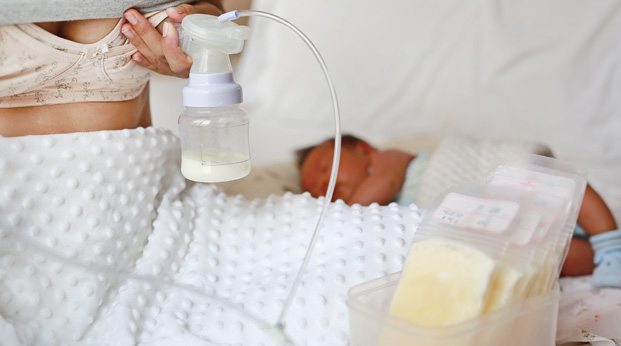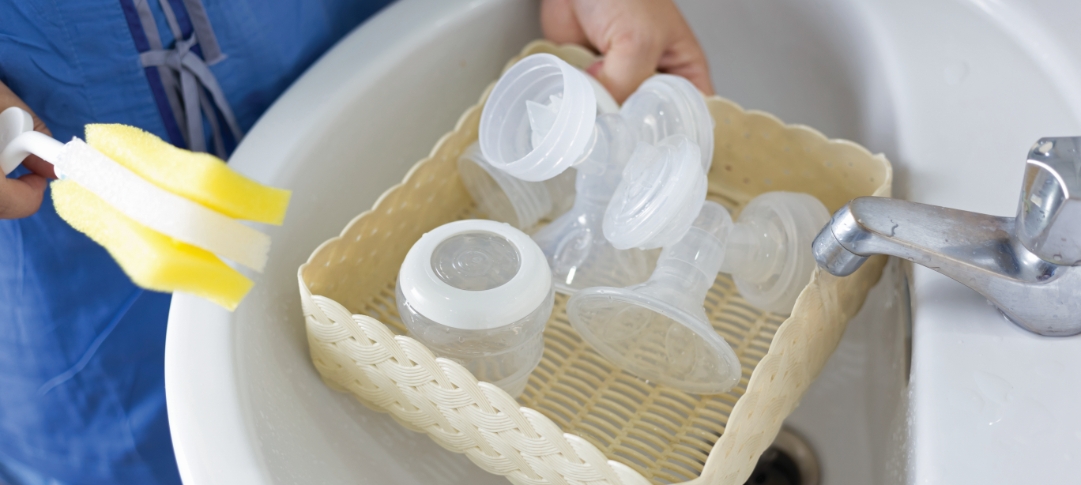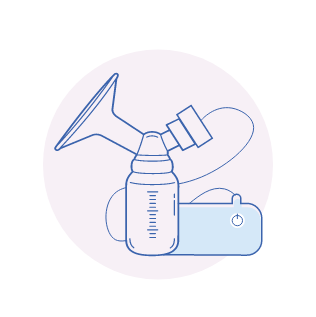
Ways To Express Your Milk by Hand or Pump
Click below to learn more about the different ways to express milk.
Storing Your Milk

- Clean glass bottles with tight-fitting lids
- Hard BPA-free plastic bottles with tight-fitting lids
- Milk storage bags, which are made for freezing human milk
Storage Location and Temperatures
Up to 4 Hours
1-2 Hours
Use within 2 hours after baby is finished feeding. After two hours, leftover human milk should be discarded.
Up to 4 Hours
1-2 Hours
Use within 2 hours after baby is finished feeding. After two hours, leftover human milk should be discarded.
Within 6 months is best.
Up to 12 months is acceptable.
NEVER refreeze human milk after it has been thawed.
Use within 2 hours after baby is finished feeding. After two hours, leftover human milk should be discarded.

- Wash your hands with soap and water
- If using a pump, make sure the pump kit and tubing are clean

AFTER EACH PUMPING
- Label the storage container with the date
- Refrigerate or chill milk right after it is expressed
- Store human milk in an insulated cooler bag with an ice pack for up to 24 hours
- Freeze human milk in small amounts of 2 to 4 ounces (or the amount that will be offered at one feeding) to avoid wasting milk that might not be finished
- Try to leave an inch or so between the milk and the top of the container
- Store milk in the back of the freezer
- Use the oldest stored milk first.
- You can thaw frozen milk in the refrigerator overnight, hold the frozen bag of milk under warm running water or set it in a container of warm water. Test the temperature by dropping a little on your wrist. It should be comfortably warm.
- Find the right milk temperature for your baby. Human milk does not necessarily need to be warmed. Some moms prefer to take the chill off and serve at room temperature.
- Do not put a bottle or bag of human milk directly on the stove or in the microwave. Microwaving milk creates hot spots that could burn your baby and damage the milk.
- Swirl human milk to mix the fat. Shaking the milk is not recommended because it can break down valuable parts of the milk.
- Use thawed human milk within 24 hours (this means from the time it is no longer frozen or completely thawed, not from the time you took it out of the freezer). Do not refreeze thawed human milk.
Safely Clean Pump Equipment

- Take apart pump tubing and separate all parts that come in contact with your breast and milk.
- Rinse the pump parts by holding them under running water to remove remaining milk.
- Do not place or wash parts in the sink. Germs in the sink could contaminate items.
- Clean pump parts in a dishwasher or by hand in a clean basin with soap and water.
- Air dry the items on a clean dishtowel or paper towel.
- Using clean hands, store the parts in a clean, protected area.
- Discard and replace moldy tubing immediately.
- If using a shared pump, clean pump dials, power switch, and countertop with a disinfectant wipe. Pump kits should not be shared.
Sanitize for added safety:
Sanitize pump parts, wash basin, and bottle brush at least once daily after they have been cleaned. Items can be sanitized using steam, boiling water, or a dishwasher with a sanitize setting.
Sanitizing is very important if your baby is less than 3 months old, was born prematurely, or has a weakened immune system due to illness or medical treatment.


